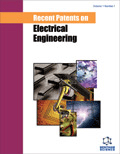Abstract
Circular resonators are key components for diverse applications, ranging from optical telecommunication systems through basic research involving highly confined fields and strong photon-atom interactions to biochemical and rotation sensing. The important properties of circular resonators are the Q factor, the free spectral range (FSR) and the modal volume, where the last two are determined by the resonator radius and the index contrast. The total-internal-reflection (TIR) mechanism employed in “conventional” resonators links these attributes and limits the ability to construct small footprint devices exhibiting large FSR and small modal volume on one hand, and high Q on the other. Recently, a new class of circular resonator, based on a single defect surrounded by radial Bragg reflectors, has been proposed and demonstrated. The radial Bragg confinement breaks the link between the modal volume and the Q, and paves the way for the realization of compact, high-Q resonators. These characteristics as well as the unique mode profile and polarization properties of these resonators and lasers make them attractive tools for nanometer scale semiconductor lasers, ultrasensitive detectors, as well as to study nonlinear optics, light tweezers and cavity QED.
Keywords: Radial bragg lasers, sagnac effect, rotation sensing, biochemical sensing.




















